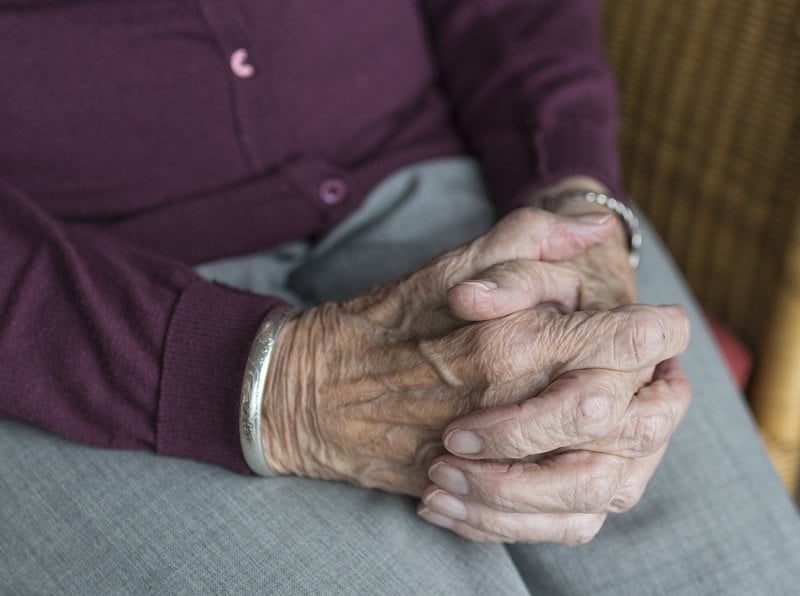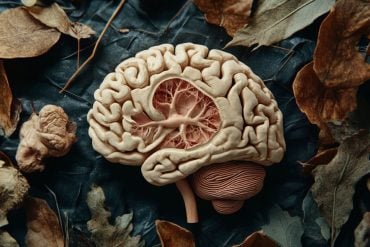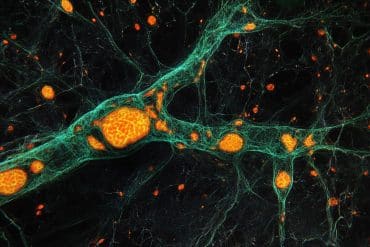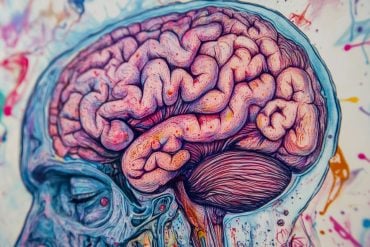Summary: Alzheimer’s patients who used antipsychotics had a 29% increased risk of head injury and a 22% higher risk of TBI compared to others with the neurodegenerative disease who did not use the medications.
Source: University of Eastern Finland
The use of antipsychotics is associated with increased risks of head and brain injuries among persons with Alzheimer’s disease, according to a recent study from the University of Eastern Finland. The risk increase was highest at the initiation of antipsychotic use. The results were published in the Journal of the American Geriatrics Society (JAGS).
“As adverse effects, antipsychotics may cause sedation, orthostatic hypotension, and arrhythmias which all may lead to falls. Among older persons, falls are the most common reason for traumatic brain injuries,” Researcher Vesa Tapiainen from the University of Eastern Finland explains as a possible mechanism for the association.
Community-dwellers with Alzheimer’s disease who used antipsychotics had a 29% higher risk of head injuries and a 22% higher risk of traumatic brain injuries when compared to community-dwellers with Alzheimer’s disease who did not use antipsychotics. Among persons with Alzheimer’s disease, antipsychotics are commonly used to treat neuropsychiatric symptoms of Alzheimer’s disease. According to clinical care guidelines, treating the cause of these symptoms, such as pain, is the first line option and secondly non-pharmacological treatments should be prioritized. The use of antipsychotics should be restricted to most severe symptoms (such as severe aggression, agitation or psychosis). Following care guidelines and by carefully considering benefits and risks of adverse effects and events could possibly lower the incidence of head injuries and traumatic brain injuries.

The study was conducted using the nationwide register-based MEDALZ cohort which includes Finnish community dwellers with a newly diagnosed Alzheimer’s disease in 2005-2011 (70,719 persons). Persons were excluded if they had a prior head injury, antipsychotic use within one year prior to antipsychotic initiation or if they fulfilled other exclusion criteria of this study. The final study population was 21,795 persons who initiated antipsychotic use and 21,795 persons who did not use antipsychotics. Medicine use was extracted from the Finnish Prescription Register. Chronic diseases, use of other medications and socioeconomic position were taken into account.
Funding: The study was funded by the Academy of Finland and the Finnish Medical Society Duodecim.
Source:
University of Eastern Finland
Media Contacts:
Vesa Tapiainen – University of Eastern Finland
Image Source:
The image is in the public domain.
Original Research: Closed access
“The Risk of Head Injuries Associated With Antipsychotic Use Among Persons With Alzheimer’s disease”. Vesa Tapiainen, Piia Lavikainen, Marjaana Koponen, Heidi Taipale, Antti Tanskanen, Jari Tiihonen, Sirpa Hartikainen, Anna-Maija Tolppanen.
Journal of the American Geriatrics Society doi:10.1111/jgs.16275.
Abstract
The Risk of Head Injuries Associated With Antipsychotic Use Among Persons With Alzheimer’s disease
BACKGROUND/OBJECTIVES
Antipsychotic use is associated with risk of falls among older persons, but we are not aware of previous studies investigating risk of head injuries. We studied the association of antipsychotic use and risk of head injuries among community dwellers with Alzheimer’s disease (AD).
DESIGN
Nationwide register‐based cohort study.
SETTING
Medication Use and Alzheimer’s Disease (MEDALZ) cohort, Finland.
PARTICIPANTS
The MEDALZ cohort includes Finnish community dwellers who received clinically verified AD diagnosis in 2005 to 2011. Incident antipsychotic users were identified from the Prescription Register and matched with nonusers by age, sex, and time since AD diagnosis (21 795 matched pairs). Persons with prior head injury or history of schizophrenia were excluded.
MEASUREMENTS
Outcomes were incident head injuries (International Classification of Diseases, Tenth Revision [ICD‐10] codes S00‐S09) and traumatic brain injuries (TBIs; ICD‐10 codes S06.0‐S06.9) resulting in a hospital admission (Hospital Discharge Register) or death (Causes of Death Register). Inverse probability of treatment (IPT) weighted Cox proportional hazard models were used to assess relative risks.
RESULTS
Antipsychotic use was associated with an increased risk of head injuries (event rate per 100 person‐years = 1.65 [95% confidence interval {CI} = 1.50‐1.81] for users and 1.26 [95% CI = 1.16‐1.37] for nonusers; IPT‐weighted hazard ratio [HR] = 1.29 [95% CI = 1.14‐1.47]) and TBIs (event rate per 100 person‐years = 0.90 [95% CI = 0.79‐1.02] for users and 0.72 [95% CI = 0.65‐0.81] for nonusers; IPT‐weighted HR = 1.22 [95% CI = 1.03‐1.45]). Quetiapine users had higher risk of TBIs (IPT‐weighted HR = 1.60 [95% CI = 1.15‐2.22]) in comparison to risperidone users.
CONCLUSIONS
These findings imply that in addition to previously reported adverse events and effects, antipsychotic use may increase the risk of head injuries and TBIs in persons with AD. Therefore, their use should be restricted to most severe neuropsychiatric symptoms, as recommended by the AGS Beers Criteria®. Additionally, higher relative risk of TBIs in quetiapine users compared to risperidone users should be confirmed in further studies.






